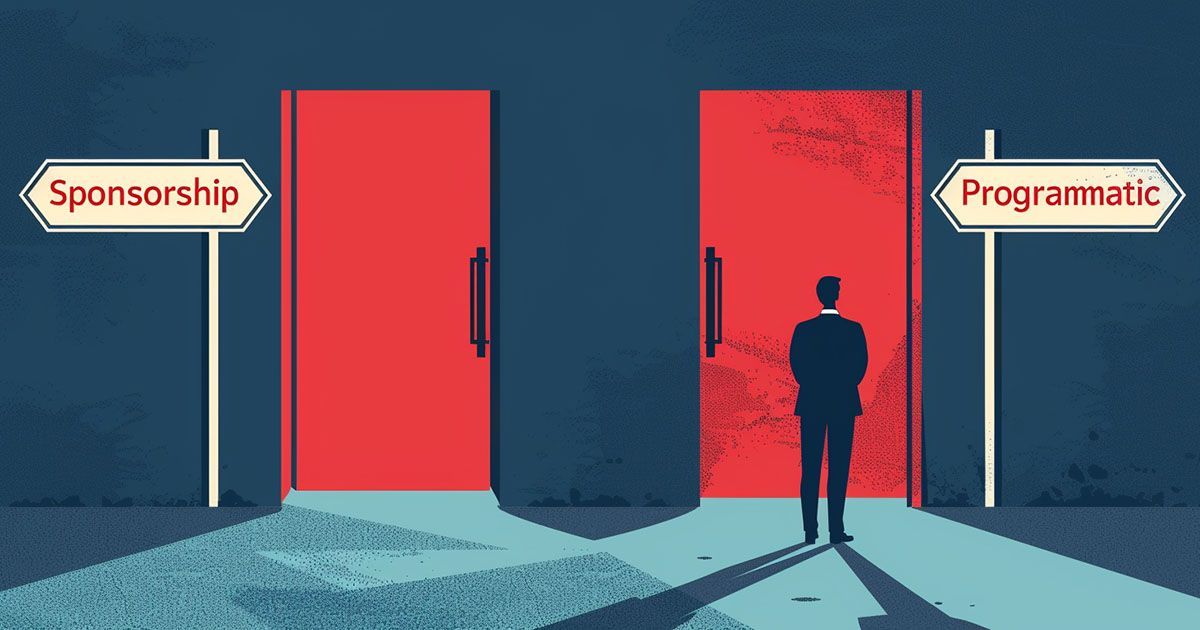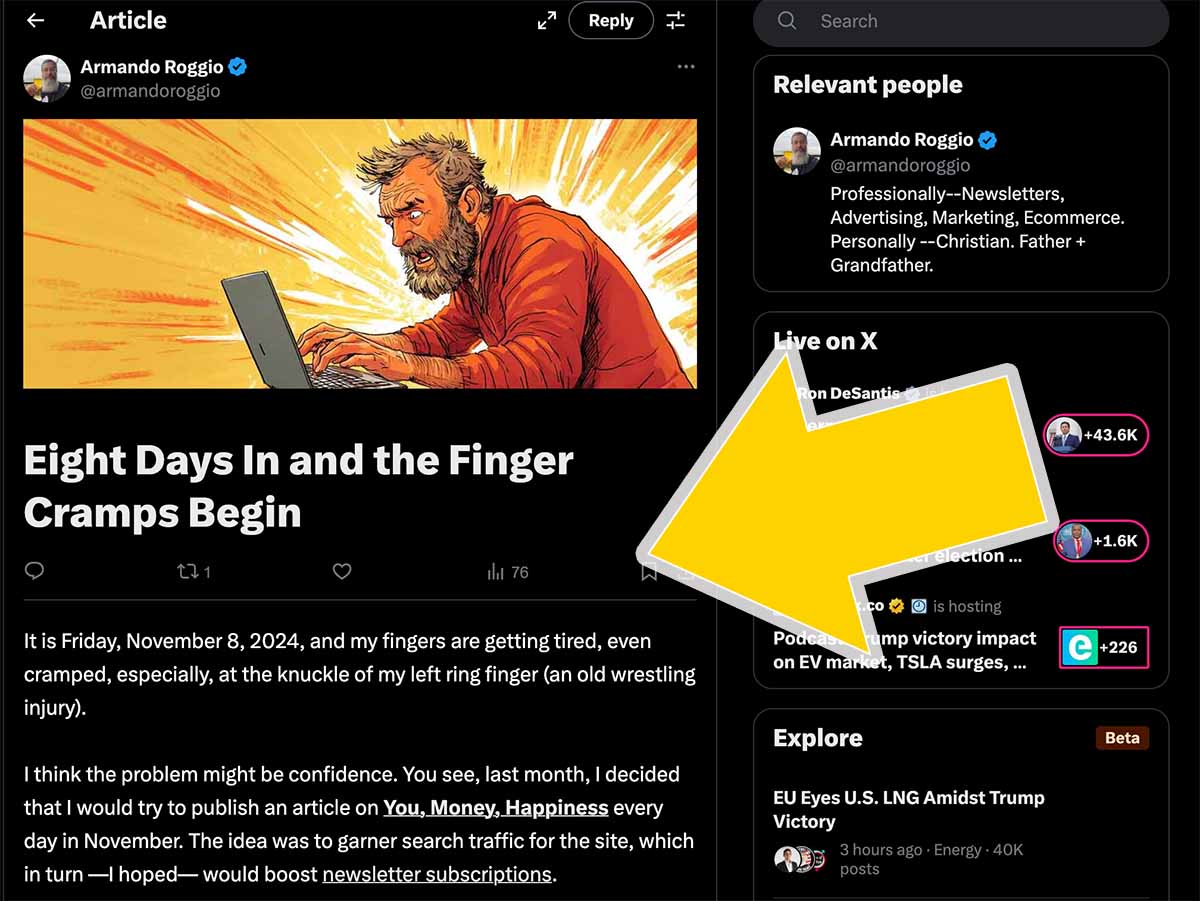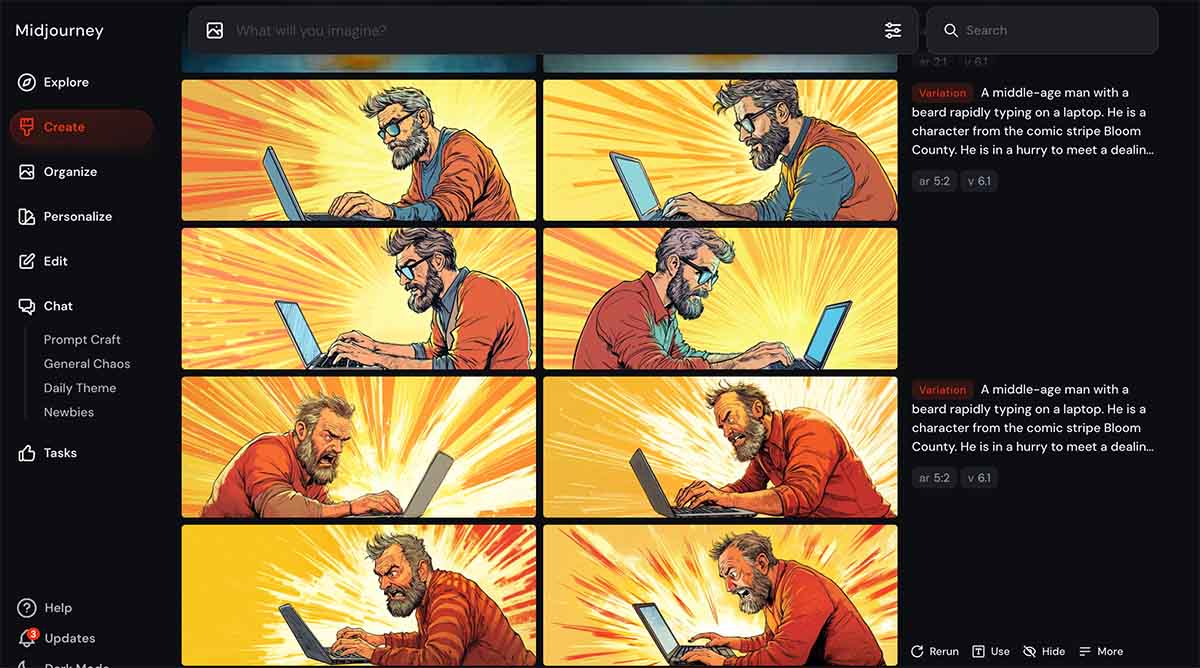25 Common Blogging Mistakes to Avoid in 2025
Blogging is the foundation of a written content business, so don't make these mistakes.

Blogging remains a powerful foundation for building a content-driven business. Yet many aspiring content entrepreneurs sabotage their success before they gain traction.
While tools and platforms have made it easier than ever to start a blog, the fundamentals of building a sustainable content business haven't changed.
In this article, I will enumerate some of the most critical and most common mistakes that derail new bloggers.
How This Article Is Organized
The common blogging mistakes listed here are organized in order of impact, starting with fundamental issues that can doom a blog from the start, moving through growth and business challenges, and concluding with optimization and maintenance concerns.
In general the list reflects this hierarchy.
- Foundation issues (niche, audience, content).
- Growth fundamentals (consistency, SEO).
- Business aspects (monetization, analytics, promotion).
- Technical and user experience.
- Community and networking.
- Content enhancement and protection.
- Optimization and maintenance.
Quick Reference
Here's the updated table with "No Email List Building" removed since it's redundant with "Not Having a Newsletter," keeping our total at 25 items:
| Mistake | Why it Matters | How to Avoid It |
|---|---|---|
| 1. Not Having a Newsletter | Your blog is rented land - newsletters are owned audience. Without one, you're building on borrowed time | Start a newsletter from day one, focus on value and consistency over frequency, build real relationships with subscribers |
| 2. No Clear Niche Focus | Without a defined focus, you can't build authority or attract a dedicated audience | Research market demand, choose a specific sub-niche based on your expertise and passion, ensure monetization potential exists |
| 3. Not Understanding Target Audience | Creating content without knowing who it's for leads to poor engagement and wasted effort | Create detailed reader personas, research audience pain points, engage with readers to understand their needs |
| 4. Poor Content Quality | Low-quality content damages credibility and won't retain readers or attract followers | Focus on depth, original research, proper citations, thorough editing, and valuable insights rather than surface-level content |
| 5. Inconsistent Publishing | Irregular posting hurts SEO, audience retention, and brand reliability | Create and stick to a realistic content calendar, batch content creation, plan ahead for busy periods |
| 6. Neglecting SEO Fundamentals | Missing organic traffic opportunities and visibility in search results | Learn basic SEO (keywords, meta descriptions, headers), use tools like Google Analytics, focus on both technical and content SEO |
| 7. Lack of Content Strategy | Random posting without clear goals leads to scattered results | Create content pillars, plan content clusters, align content with business objectives and audience needs |
| 8. Poor Monetization Planning | Without clear revenue strategy, blog remains a hobby not business | Research and implement multiple income streams (affiliate, products, services, ads), time monetization appropriately |
| 9. Ignoring Analytics | Can't improve what you don't measure | Set up proper tracking, regularly review metrics, adjust strategy based on data |
| 10. Inadequate Content Promotion | Great content goes unnoticed without proper distribution | Create promotion plan for each post, leverage social media, email list, and networking |
| 11. Poor Website User Experience | Bad UX drives readers away and increases bounce rates | Optimize site speed, mobile responsiveness, navigation, readability, and visual appeal |
| 12. No Networking/Community Building | Missing opportunities for growth and collaboration | Engage with other bloggers, participate in communities, respond to comments, build relationships |
| 13. Ignoring Visual Content | Text-heavy posts reduce engagement and shareability | Include quality images, infographics, videos, proper formatting, and white space |
| 14. Lack of Content Repurposing | Missing opportunities to maximize content value | Plan to transform posts into different formats (video, social, email, etc.) |
| 15. Not Building Authority | Difficulty standing out in crowded niches | Share unique insights, include data/research, showcase expertise, gather social proof |
| 16. Poor Headlines/Titles | Reduced click-through rates and social shares | Study copywriting, test different formats, focus on clarity and value proposition |
| 17. No Legal Protection | Vulnerability to legal issues and reduced credibility | Add necessary legal pages, understand copyright laws, include proper disclosures |
| 18. Weak Internal Linking | Missing SEO and user retention opportunities | Create content clusters, link related posts, guide user journey |
| 19. Over-personalizing/Under-personalizing | Wrong balance can alienate readers | Find sweet spot between personality and professional content |
| 20. Not Updating Old Content | Outdated content loses value and SEO benefits | Regular content audits, update old posts, remove/redirect obsolete content |
| 21. Lack of Call-to-Actions | Missing conversion opportunities | Include relevant CTAs in posts, guide reader's next steps |
| 22. Poor Brand Development | Difficulty building recognition and loyalty | Develop consistent voice, visual brand, and positioning |
| 23. Ignoring Site Security | Risk of losing content and user trust | Regular backups, security plugins, strong passwords, updates |
| 24. Perfectionism | Delayed publishing and stunted growth | Focus on "good enough," iterate and improve over time |
| 25. Unrealistic Expectations | Frustration and early abandonment | Set realistic goals, celebrate small wins, focus on steady progress |
The Most Common Blogging Mistakes
No. 1. Not Having a Newsletter
The biggest mistake content entrepreneurs make is treating newsletters as optional.
Here's the hard truth. Your blog posts compete with millions of others in search results and social feeds. But newsletters create a direct line to your audience, unfiltered by algorithms or SEO.
Every successful content business in 2025 is built on a strong newsletter foundation.
- Start simple. Weekly roundups of your best insights plus exclusive commentary will work just fine.
- Focus on value over frequency. Share behind-the-scenes insights. Test different formats until you find what resonates. Most importantly, treat your newsletter subscribers like your most valuable audience — because they are.
Here is an example. You can subscribe to the You, Money, Happiness newsletter.
No. 2. No Clear Niche Focus
Many new bloggers cast too wide a net, trying to appeal to everyone. The result? They connect with no one.
The most successful content businesses start narrow and expand later. Consider Tim Ferriss. He didn't start by covering lifestyle design broadly. He focused specifically on productivity hacks for entrepreneurs.
Your niche should sit at the intersection of your expertise, market demand, and monetization potential.
Research competition, but don't let it deter you. Competition validates market demand. Instead, focus on finding your unique angle within a proven niche.
If you still want a boost check out "35 Types of Blogs You Can Start Now."
No. 3. Not Understanding Target Audience
Creating content without a clear picture of your target reader is like shooting arrows in the dark. Too many bloggers write what they think their audience wants instead of doing the research or even asking.
- Create a detailed reader persona based on real data.
- Join communities where your target audience hangs out.
- Read comments, questions, and complaints.
- Use tools like AnswerThePublic to understand your potential reader's search intent.
Most importantly, engage with folks directly through comments and social media. Your content strategy should address your audience's specific pain points and aspirations.

No. 4. Poor Content Quality
Generative AI can generate basic content in seconds. So don't even try posting thin, thoughtless blog posts.
Your advantage as a human creator is depth of insight and original thinking. Every post should teach something specific or present a unique perspective backed by research, data, or personal experience.
Think like an investigative journalist: dig deeper, challenge assumptions, and bring fresh insights to common topics.
Don't just regurgitate what others have said. Your content should make readers think, "Wow, I never thought about it that way." That's how you build authority and keep readers coming back.
As an example, check out "Programmatic Advertising Will Dominate Email Newsletter Sponsorships" and "Will Enshittification and The Dead-internet Theory Bankrupt Content Creators?" IMO, both are examples of something an AI would not have generated.

No. 5. Inconsistency
The fastest way to kill an otherwise good blog's momentum is irregular posting. When it comes to starting a blog consistency matters more than frequency.
Whether you publish once a week or once a month isn't as important as sticking to your schedule.
Smart content creators work four-to-six weeks ahead, maintaining a buffer of ready-to-publish posts.
Use tools like Notion or Trello to manage your content calendar. Batch similar tasks, for example, do all your research one day, writing another, editing on a third.
This approach prevents the feast-or-famine cycle that burns out most new bloggers.
No. 6. Neglecting SEO Fundamentals
Search engine optimization (SEO) isn't optional.
SEO is your blog's oxygen supply. Unfortunately, many new bloggers either ignore it completely or get lost in technical details.
Focus on the basics first.
- Solid keyword research,
- Clear site structure,
- and content that actually answers search intent.
Use tools like Ahrefs or SEMrush to find low-competition keywords in your niche —here is an example: the phrase "common blogging mistakes' was a term I found in SEMrush when I was doing research for You, Money, Happiness.
Structure your content with clear headers and include relevant internal links. Don't try to game the system - focus on creating comprehensive resources that naturally include relevant keywords and answer related questions.
No. 7. No Content Strategy
Random posting might work for hobbyists, but content entrepreneurs need a strategy.
A professional content creator's blog isn't a diary —it is a business asset.
Start by mapping out content pillars, defining, perhaps, three-to-five core topics that define your expertise.
Create topic clusters of related content around these pillars. Each post should serve a specific purpose in your business funnel like attracting search traffic, building authority, generating leads, or driving sales.
Plan your content mix like a TV network programs its shows. Mix timely posts with evergreen content, beginner topics with advanced insights.

No. 8. No Plan to Make Money
Too many bloggers treat earning money as an afterthought, then wonder why they're not making money.
In contrast, professional bloggers (content entrepreneurs) plan their revenue streams from day one.
Start with low-hanging fruit like affiliate marketing, but plan for higher-value offerings like digital products, services, or my personal favorite, physical products.
Each piece of content should contribute to at least one revenue stream. Map out your value ladder from free content to entry-level products to premium offerings.
Don't rely on ads alone. The real money is in solving specific problems for specific people.
No. 9. Ignoring Analytics
Too many bloggers either don't track metrics or track the wrong ones.
Forget vanity indicators like page views. Focus on engagement metrics that matter. Think time on page, email signups, return visitors, and most importantly, conversions.
Use Google Analytics to identify your best-performing content, then create more like it.
Track where your traffic comes from and double down on what works. Set up goal tracking to measure how content contributes to your business objectives.
No. 10. Inadequate Content Promotion
The "build it and they will come" approach rarely works. Instead, I like to quote my friend Todd Christenson, who used to say, "Toot your own horn or it won't be tooted."
Content promotion and distribution is as important as creation. Create a promotion checklist for every post that include things like social media sharing, email newsletters, community distribution, and paid amplification when appropriate.
Spend at least as much time promoting your content as you do creating it, no really.
Here is a recent example, in November 2024, I committed to writing a blog post everyday to give You, Money, Happiness a traffic boost. As part of the plan, I wrote an article on X that linked back.

No. 11. Poor Website User Experience
A fast, clean, and intuitive website isn't a luxury, rather it's a basic blogging requirement. Users bounce from slow sites, and Google penalizes poor performance. I run sites on Ghost, Kit, Beehiiv, and others.
You want to focus on speed. You need a platform that compresses images, uses caching, and serves content quickly.
Make navigation obvious. Break up text with subheadings, bullet points, and relevant images.
Test your site regularly on mobile devices, too, since that's where most of your readers are.
Remove anything that doesn't serve your readers or your business goals. Simple and fast beats fancy and slow every time.
No. 12. No Networking or Community Building
I will admit this is one I struggle with. Content entrepreneurship can feel like a solo game, but the biggest wins come through collaboration.
- Build relationships with other creators in your space before you need them.
- Comment thoughtfully on their blogs.
- Share their content with genuine praise. Join relevant communities on Discord or Reddit.
- Offer value before asking for anything in return.
These connections lead to guest posting opportunities, backlinks, and business partnerships. Plus, having a network of peers helps you stay motivated when times get tough.
No. 13. Ignoring Visual Content
Dense walls of text don't cut it anymore. Even technical content needs visual breaks. Use custom graphics, charts, or diagrams to illustrate complex points. Screenshots and process photos add credibility to how-to content.
Learn basic design principles and use tools like Photoshop or Canva to create consistent visual branding.
Include at least one pinnable image for Pinterest traffic. Consider adding video summaries for key posts. Oh, and use Midjourney. It is how I generate about 95 percent of the images I use.

No. 14. Not Repurposing Content
Creating content from scratch for every platform is inefficient. Smart content entrepreneurs turn one piece of content into many.
- Transform blog posts into X posts, LinkedIn articles, YouTube scripts, or podcast episodes.
- Break down long posts into Instagram carousel slides.
- Turn key points into quote graphics.
For You, Money, Happiness, I have an assistant who generates six X posts every day from content I have previously written.
Want another example? Recently, I demonstrated that you could create 100 X posts in less than an hour when you combine content reuse with generative AI.
Read "How I Scheduled 100 X Posts in One Day."
No. 15. Not Building Authority
Anyone can publish content. Authority comes from proving you know your stuff.
- Back up claims with data.
- Share case studies from your own experience.
- Document your processes and results.
- Interview experts in your field.
- Create original research or surveys. (Here is an example).
Build a body of work that demonstrates clear expertise in your niche. For example, I have published more than 1,000 ecommerce articles, most of which are published on the Practical Ecommerce website.
No. 16. Poor Headlines and Titles
This one has always been a challenge for me. Early in my writing career, I worked as a journalist. One of the benefits of being a reporter is that there was an editor and a professional headline writer.
I could come up with a pretty bland headline and have someone improve it. But no more.
I have learned that the headline is a promise to the reader. Weak headlines break that promise before it begins.
- Study copywriting fundamentals.
- Understand what makes people click, i.e., curiosity, specificity, utility, urgency.
- Use tools like CoSchedule's Headline Analyzer to test different versions.
- Never sacrifice accuracy for clicks.
Finally, please do not hear what is not being said. Don't write click-bait headlines. Click-bait might work once, but it kills long-term trust. Your headline should clearly convey the value of your post while making readers want to learn more.
No. 17. No Legal Protection
Ignoring legal requirements can sink your business before it takes off. Get basic legal pages in place. Your blog needs a privacy policy, terms of service, and affiliate disclosures.
You should also try to understand copyright laws for images and content you share (this is another reason to use Midjourney).
If you're collecting email addresses, ensure GDPR compliance. Consider forming an LLC to protect personal assets.
These aren't exciting tasks, but they're essential foundations for a legitimate business. Consult with a lawyer who understands digital business if needed.
No. 18. Weak Internal Linking
This harkens back to our point about SEO, but it is worth thinking about when you build a post.
You see, internal links are the highways of your site, guiding readers through your content ecosystem.
- Create content clusters around main topics, linking related posts together.
- Use descriptive anchor text.
- Link to older posts from new ones and update old posts with links to newer content.
Strategic internal linking keeps readers on your site longer and helps search engines understand your content structure. Think like a librarian organizing knowledge, not just a writer creating posts.
No. 19. Over-personalizing or Under-personalizing
Finding the right balance of personality in your content is tricky. Too much personal detail turns your blog into a diary. Too little makes it sterile and forgettable.
Share relevant personal experiences that illustrate your points. Use your unique perspective to stand out. But always tie personal stories back to reader benefits.
Your readers care about your journey only to the extent it helps them with their own. Keep the focus on delivering value while letting your personality shine through naturally.

No. 20. Not Updating Old Content
Here is one I hate, but do anyway —update. Your blog archive is a valuable asset, but only if it stays relevant.
- Set up a regular content audit schedule.
- Update old posts with new information, examples, and resources.
- Remove or redirect outdated content.
- Refresh your best-performing posts first. They're already proven winners.
- Add new insights based on reader comments and questions.
Think of your content as a living library that grows and evolves with your audience's needs. Regular updates also signal freshness to search engines.
No. 21. No CTAs
While I don't believe that every post needs a clear next step for readers. Without CTAs, you're letting valuable opportunities slip away.
This doesn't mean ending every post with "buy my course." Rather match your CTA to the reader's stage in your funnel. New visitors might need a newsletter signup. Regular readers might be ready for a free workshop. Loyal followers could want your paid offerings. Make CTAs contextual and valuable. If you're teaching a strategy, offer a downloadable template. Discussing a problem? Link to your solution. Guide readers toward deeper engagement without being pushy.
No. 22. Poor Brand Development
Your blog's brand is more than a logo. It is the consistent experience readers have with your content.
- Develop a clear voice and stick to it.
- Create style guidelines for your writing, visuals, and communication.
- Choose a specific point of view within your niche and maintain it.
- Build recognition through consistent formatting and design elements.
Your brand should make readers feel like they're hearing from a trusted friend who happens to be an expert in your field. This consistency builds trust and makes your content instantly recognizable.
No. 23. Ignoring Site Security
Security breaches can destroy reader trust and tank your SEO rankings. Install a security plugin like Wordfence or Sucuri. Keep your website installation, themes, and plugins updated. Use strong passwords and two-factor authentication. Back up your site regularly - preferably daily for content and weekly for the full system.
Monitor your site for malware and suspicious activity.
No. 24. Perfectionism
As we near the end of this list, know that perfectionism kills more blogs than poor content ever did.
Your first posts won't be your best posts and that's okay. Focus on publishing consistently and improving gradually. Set quality standards but don't let perfect be the enemy of good. Start with minimum viable content - posts that solve specific problems effectively, even if they're not comprehensive masterpieces. You can always update and expand later. Remember that a published B+ post helps more people than an unpublished A+ post.
No. 25. Unrealistic Expectations
Building a successful content business takes time. Don't expect overnight success or quick riches. Set realistic milestones based on actual metrics, not wishful thinking. Celebrate small wins like your first email subscriber, first affiliate sale, first positive comment.
Consider tracking your progress monthly, not daily. Commit to at least 12 months of consistent effort before judging results. Focus on building systems and processes that scale. Success in content entrepreneurship is a marathon, not a sprint.
Blogging
The world of content entrepreneurship is constantly evolving, but these fundamentals remain crucial for success. Focus on fixing the most critical issues first, then work your way down the list.
Every successful content creator started exactly where you are. The difference between success and failure often comes down to avoiding these common mistakes and staying consistent with the right strategies.
Start by auditing your current blog against these points. Pick the three most pressing issues and create an action plan to address them. Then systematically work through the rest. Building a successful content business is challenging, but with the right approach and persistent effort, it's absolutely achievable.